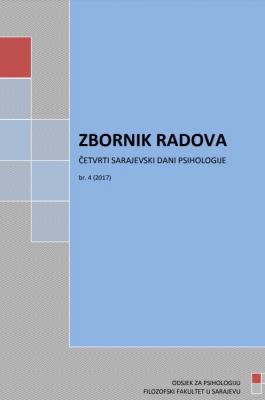Kongruentnost samoprocjene i semantičke procjene stilova humora: preliminarna analiza
Humor styles self-assessment and semantic assessment congruency: a preliminary analysis
Author(s): Jadranka Kolenović-Đapo, Nina Hadžiahmetović, Nermin Đapo, Aida MuheljićSubject(s): Semantics, Psycholinguistics, Sociolinguistics, Behaviorism
Published by: Filozofski fakultet Univerziteta u Sarajevu
Keywords: humor styles; factor structure; semantic assessment; descriptors;
Summary/Abstract: The study aimed at congruency assessment between humor styles self-assessment and other-assessment in the semantic space of humor descriptors. According to a 2 x 2 humor styles model, everyday use of humor can be explained by adaptive maladaptive (aggressive and self-defeating humor) and intrapsychic-interpersonal (affiliative and self-enhancing humor) dimensions. Participants were 200 psychology students from the Faculty of Philosophy Sarajevo. The Humor Styles Questionnaire (HSQ) was administered, as well as the Humor Styles Descriptors Assessment Scale (HSDAS), specifically developed for the study purposes. The scale is used for descriptor assessment of the imaginary other, whose features correspond to humor styles. Internal consistency of the Humor Styles Questionnaire ranges from .75 to .79. A latent space of the humor styles descriptors was assessed by means of exploratory factor analysis, explaining 45 % of variance. After removing a few items from the analysis, exploratory factor analysis shows a fair four factor descriptor structure corresponding to four humor styles. The internal consistency range of the descriptor factors was from .85 to .90. In the latent space of all factors, identical fundamental descriptors were extracted, with content diff erences in affiliative humor. In second order exploratory factor analysis two factors were singled out, explaining 72 % of variance. The first factor corresponds to affiliative and self-enhancing humor descriptors, and the second factor to aggressive and self-defeating humor descriptors, indicating factorial organization on the adaptiveness continuum. Multidimensional scaling of the factor descriptors indicates the feasibility of humor description in two-dimensional space, with quadrant position of factors corresponding to opposite intersection of adaptive and interpersonal (affiliative humor), adaptive and intrapsychic (self-enhancing humor), maladaptive and interpersonal (aggressive humor), and maladaptive and intrapsychic (self-defeating humor). Intercorrelations between descriptor and questionnaire humor styles measures show a convergence between the same styles operationalized through self- and other-assessment.
Journal: SARAJEVSKI DANI PSIHOLOGIJE: ZBORNIK RADOVA
- Issue Year: 4/2017
- Issue No: 4
- Page Range: 38-54
- Page Count: 17
- Language: Bosnian

